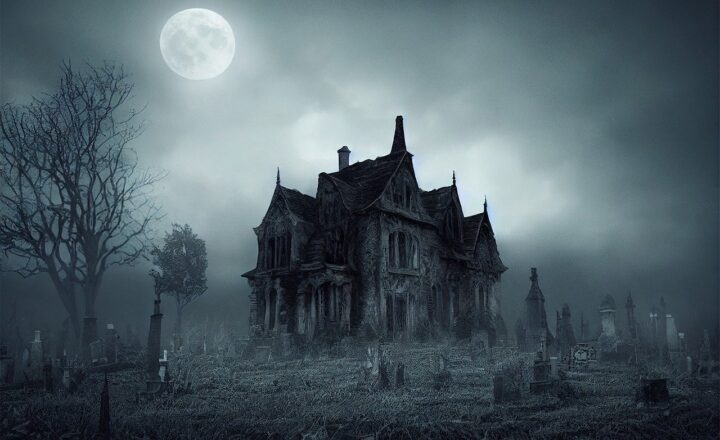The Psychological Impact of Scary Movies and Why We Love to Be Afraid
November 16, 2024

Scary movies have been a staple of the film industry for decades, captivating audiences with their eerie plots and spine-chilling moments. But what is it about these films that make us collectively scream with delight and dread? In this article, we will delve into the psychological effects of horror films, the reasons behind our fascination with fear, and the emotional benefits that come from experiencing scares on the big screen.
1. The Psychology of Fear
Fear is a powerful emotion, one that plays a crucial role in our survival. It’s an evolutionary response designed to protect us from danger. When we watch horror films, we engage with these fear responses in a controlled environment. According to psychologists, three primary theories explain how horror movies influence our psychology:
- The Catharsis Theory: This theory suggests that experiencing fear can provide a sense of relief and emotional release. By confronting our fears in a fictional context, we can purge pent-up emotions and achieve catharsis, leaving us feeling emotionally lighter.
- The Sensation-Seeking Theory: Many individuals are drawn to thrilling experiences, and horror films provide an adrenaline rush similar to that of roller coasters or extreme sports. Sensation seeking leads people to willingly expose themselves to fear for the thrill of the ride.
- The Superiority Theory: In this view, audiences derive pleasure from feeling braver than the characters on screen. Watching someone face terrifying situations gives viewers a sense of control as they recognize their ability to handle fear more effectively than those fictional characters.
Understanding these psychological mechanisms allows us to appreciate why we turn to horror films, especially when feeling anxious or overwhelmed in real life.
2. The Neural Response to Scary Movies
When watching a horror film, different regions of the brain light up, engaging us in the experience of fear. Here’s how our brain responds:
- Amygdala Activation: The amygdala, responsible for processing emotions like fear, is highly active during scary moments, triggering the body’s fight-or-flight response. This physiological activation can result in increased heart rate and adrenaline release, mimicking real danger.
- Dopamine Release: Watching horror can lead to dopamine release in the brain, which is associated with pleasure and reward. This combination of danger and payoff explains why people look for repeat experiences with horror films.
- Cognitive Dissonance: The tension created between knowing that what we’re watching is fiction while feeling actual fear leads to an interesting cognitive dance. The resolution of this tension can provide satisfaction post-viewing.
This interplay between emotions and brain activity reveals our inherent attraction to fear-inducing content and the joy we derive from confronting such emotions.
3. The Social Aspects of Horror Films
Horror films are often viewed in groups, whether in theaters or at home with friends. This communal experience adds another layer to the enjoyment:
- Bonding Through Fear: Sharing a terrifying experience can strengthen social bonds. The act of screaming together, clutching one another, or laughing nervously can create a shared memory that enhances relationships.
- Cultural Commentary: Horror often reflects societal fears and cultural issues. By watching horror films together, audiences can engage in discussions about these themes, creating a forum for analysis and conversation.
- Safe Exploration of Taboo Topics: Scary movies often touch on dark subjects, and experiencing these narratives in a safe environment allows exploration of these taboos without real-life consequences.
As we engage with horror films alongside others, we cultivate connections while delving deeper into the human psyche and societal norms.
4. Emotional Benefits of Watching Horror Movies
Despite the frightening themes and jump scares, watching scary movies offers several emotional benefits:
- Increased Resilience: Confronting fear through horror films allows individuals to face their anxieties in a controlled manner, enhancing their resilience to real-world fears.
- Stress Relief: Many fans report that horror movies act as a form of escapism, providing a break from daily stressors and offering a momentary distraction.
- Enhancing Emotional Responses: Horror films can amplify our emotional responses, providing a cathartic release and the ability to reflect on other life stresses.
The complexities of fear response become apparent when we realize how beneficial these experiences can be, connecting us back to the concept of catharsis.
5. A Closer Look at Popular Horror Films
To better understand the psychological impact of scary movies, let’s look at a few popular examples:
- “Psycho” (1960): Alfred Hitchcock’s classic delves into the inner workings of a disturbed mind, making the viewer question their understanding of sanity and morality. Its iconic shower scene has led to a broader conversation about violence in cinema and psychological trauma.
- “The Shining” (1980): Stanley Kubrick’s chilling adaptation of Stephen King’s novel explores themes of isolation and madness, invoking intense fear through its atmosphere. The psychological deterioration of the main character mirrors real-life mental health struggles, making it a topic for discussion and analysis.
- “Get Out” (2017): Jordan Peele’s groundbreaking horror film not only thrills but also comments on racial tensions in America. It pushes audiences to confront uncomfortable truths, appealing to the superior theory as viewers engage by questioning their own responses and those of the characters in a socio-political context.
Dissecting these films allows for an understanding of how horror can serve as a vehicle for deeper conversation and personal growth.
6. Conclusion: The Allure of the Scare
Horror movies offer an intriguing glimpse into the human psyche, revealing why we appreciate being scared. The psychological, emotional, and social factors intertwined create a complex web of attraction and engagement. These films not only entertain but also provide a space for exploration, discussion, and catharsis.
Whether you’re drawn in by the thrill, the adrenaline rush, the communal experiences, or the chance to confront your fears, horror films will continue to hold a significant place in popular culture. As viewers, understanding our fascination with fear encourages us to embrace it in healthy ways, blending entertainment with emotional growth.






